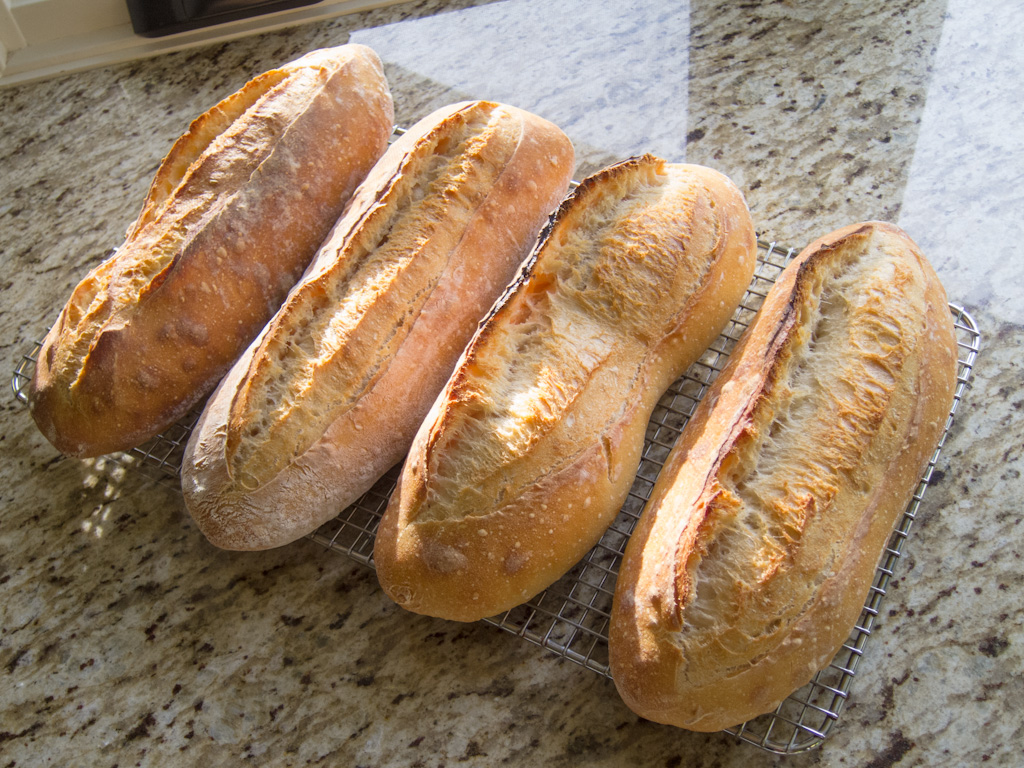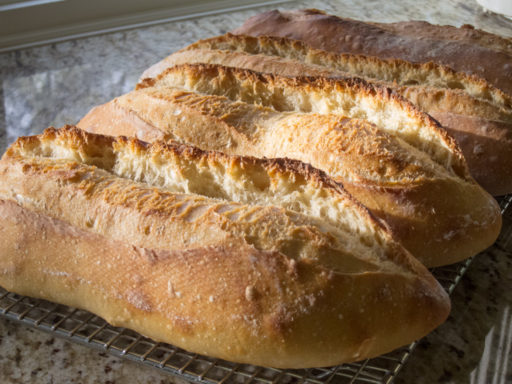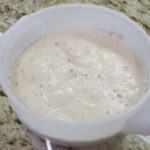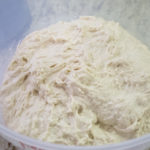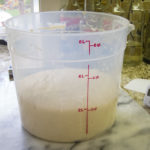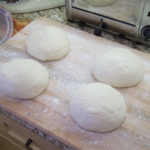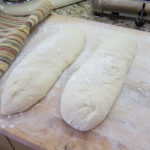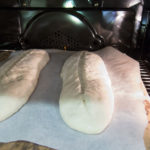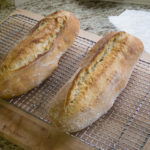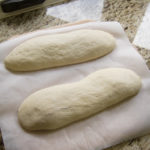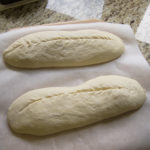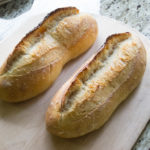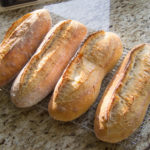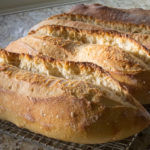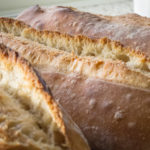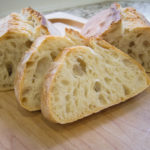Loaf 29 – SFBI Sourdough Again
I used the same recipe as Loaf 27 – the “two feed liquid levain sourdough,” made from the SFBI starter now in it’s third generation. The first step was to take the starter I made after Loaf 27 and do two feedings over a 24 hour period to get it to a 100% hydration, and to build up the amount I’d need for four loaves and another starter to archive in the fridge. I ended up with 600g of liquid levain.
For four 500g loaves the recipe was:
| Flour | 941g |
| Water | 564g |
| Yeast | 1g |
| Salt | 24g |
| Liquid starter | 470g |
I’m not sure the 1g of extra yeast really affects anything.
After mixing, the dough ferments for 2.5 hours with three folds about 1/2 hour apart. The third picture below shows how beautifully the dough came together over that time. I then divided it into 500g sections and shaped boules for them to rest for another 1/2 hour.
During some of that time I searched out videos for shaping, since that was my biggest problem last time. I embedded my favorite one below – it’s consistent with what Frank showed us in class. This time went a lot better, but judging from the crumb of the final loaves I don’t think I’ve nailed it yet.
The final shaping was followed by a 1.5 hour proofing time. My oven only has room for two loaves, so right after shaping I parked two of them in the fridge for 30 minutes to allow for the delay in them waiting their turn in the oven – I’m not sure they would have over-proofed if I hadn’t done this, but I wanted to play it safe.
My scoring worked well this time – I just went for it rather than sweating about it. They were baked on a pizza stone in a 500 degree oven that was reduced to 450 when the loaves went in. I also added a cup of hot water to a pan on the bottom of the oven for steam. Total baking time was about 22 minutes.
Results
The final loaves were beautiful. They developed nice ears in the oven, and browned to a nice golden color. The crust didn’t soften this time, keeping a nice crunch.
The crumb is still a bit troublesome – I’d like to see the holes more consistent. Some of the larger holes were long along the loaf causing me to suspect my shaping skills are affecting them poorly.
The flavor was a little bland with no hint of sourness. I think I was a little shy on the salt. Instead of trusting my 3g per tsp. measurement, I used the scale to measure the 24g. It ended up being 7 tsps, where my other measurement suggested it should have been 8 tsps. Judging from the flavor, I should have put in the extra tsp.
Lessons
- I did the proofing on wood cutting boards this time rather than on a linen couche. This kept the bottom (which was later the top when flipped onto the peel) damp, which I don’t think is good.
- Starter after it’s second feeding – now a nice liquid levain
- Ingredients mixed
- A few folds and 2.5 hours later it’s looking really nice
- Pre-shaped into 500g boules
- Shaped four loaves, these are the first two to get baked
- Scored and into the oven
- I’m really happy with the results!
- These two took a 30 min. nap in the fridge so I could bake them after the first two
- Scored and ready to bake
- Yes!
- These are four of the best looking loaves I’ve made so far
- Nice ears
- Beauty shot
- Nice inside, but not yet perfect
- New starter for the fridge
And here’s the bread shaping video:

